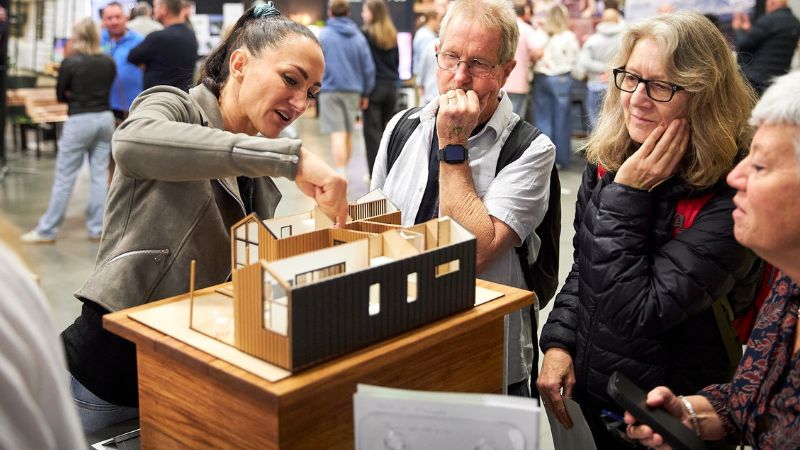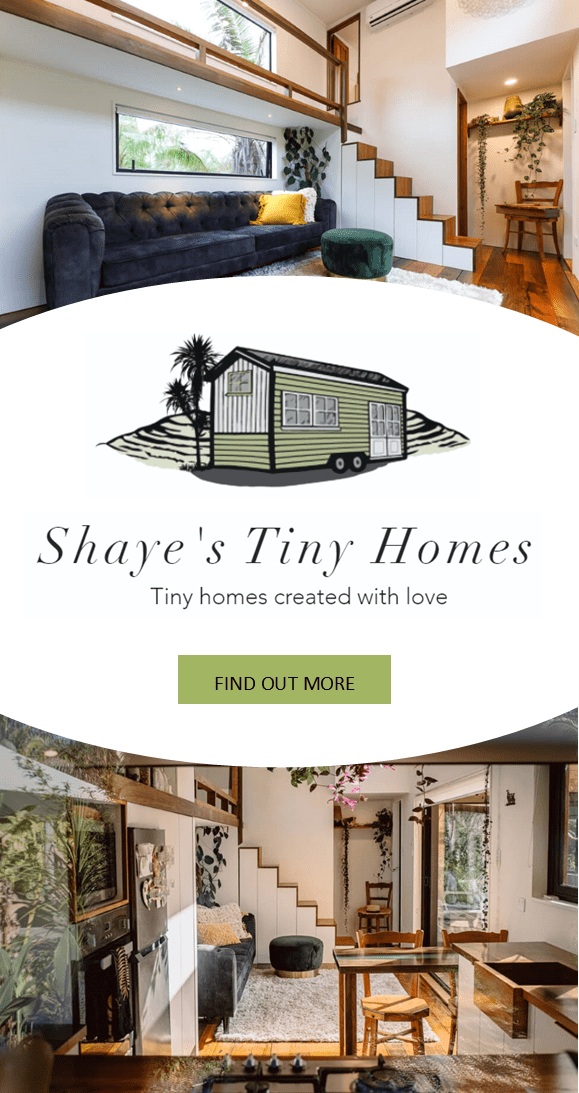Why retirees are trading retirement villages for compact comfort tiny homes.
Tiny homes are often associated with millennial minimalism and urban wanderlust. Yet, the 2024 Tiny House Expo painted a different picture: tiny homes are becoming increasingly popular among older adults. With 74.8% of expo attendees over the age of 46, this trend highlights a significant shift in New Zealand’s tiny home movement. Far from being a trend confined to younger generations, tiny living is drawing retirees and soon-to-be retirees seeking simpler, more financially sustainable lifestyles.
Tiny Living: Not Just a Millennial Trend Anymore
For years, tiny homes have been marketed as eco-friendly and cost-effective solutions, often appealing to younger buyers. However, our expo survey results reveal that this lifestyle has a growing appeal among older New Zealanders, who are motivated by similar goals of affordability and minimalism, but with an added focus on security and long-term sustainability. 41.5% of attendees were 56 or older, and an additional 33.3% were between 46 and 55, suggesting that a significant portion of the tiny home community consists of those who are approaching or enjoying retirement.
This older demographic’s interest in tiny homes aligns with their desire for manageable housing costs. Downsizing offers a chance to reduce living expenses, embrace a simpler lifestyle, and create financial breathing room, without the hefty mortgage and upkeep costs associated with traditional homes.
Financial Independence in a Compact Space
The draw of financial freedom is clear from the survey results. Most attendees indicated plans to invest in tiny homes priced between $100,000 and $150,000 (32.2%) or $150,000 and $200,000 (24%). For many retirees, these budgets reflect a comfortable balance between affordability and quality, offering the chance to own a home without debt. Additionally, 48.2% of attendees already own land, allowing them to build a tiny home without the need to purchase new property.
With tiny homes offering a more accessible price point and reduced maintenance demands, retirees are seeing these structures as practical investments. Living in a compact space not only lowers expenses but also promotes a lifestyle with fewer physical and financial burdens, allowing older adults to focus on hobbies, travel, or spending time with loved ones.
A New Take on Design Preferences
The older demographic is shaping tiny home design as well. While lofted designs appeal to younger audiences, 56.6% of attendees prefer single-level layouts, an option that aligns well with accessibility needs. Single-level homes eliminate the need for stairs or ladders, offering greater ease of movement, particularly for those seeking long-term residence.
These design preferences also highlight the practical priorities of the older tiny house buyer. Many are looking to age in place, and single-level designs offer flexibility and security. With a fixed foundation also preferred by 27.5% of attendees, the desire for stability, both literally and figuratively, is a significant factor for those planning to live in tiny homes full-time.
Looking Ahead: The Future of Tiny Homes for All Ages
The demand for tiny homes among older adults signifies a broader shift in New Zealand’s housing landscape. Tiny homes are becoming more than a millennial lifestyle choice; they are evolving into a practical solution for those seeking financial independence, simplicity, and legal security. By understanding and addressing the needs of older tiny home buyers, builders and policymakers can foster a more inclusive market that accommodates this growing demographic.
As New Zealand’s tiny house movement expands, it’s clear that the appeal of tiny living crosses generational lines. With its focus on affordability, minimalism, and sustainability, the tiny house lifestyle offers retirees a unique opportunity to redefine their homes, and their lives, on their own terms.


